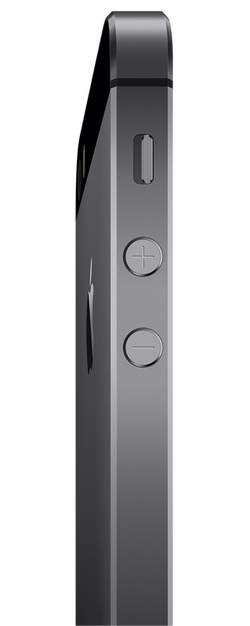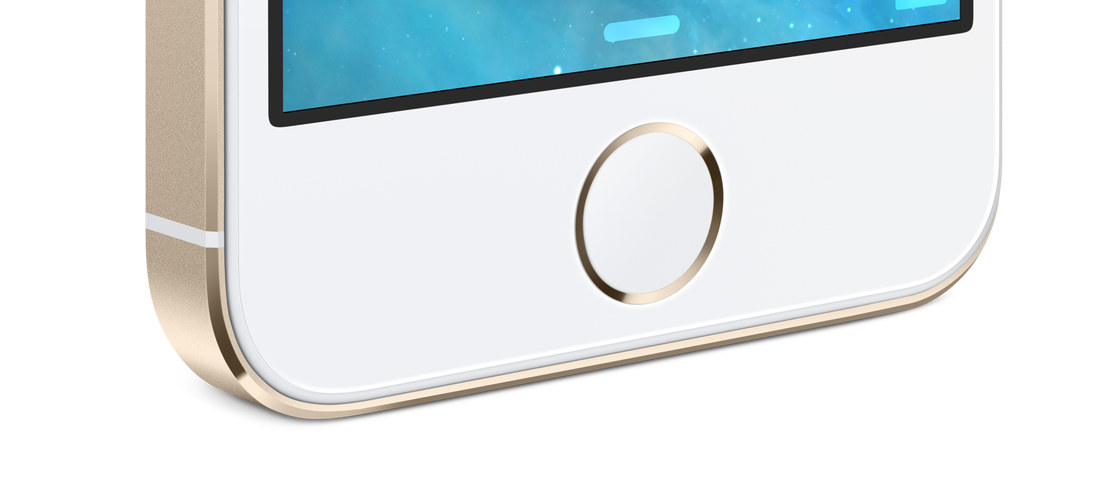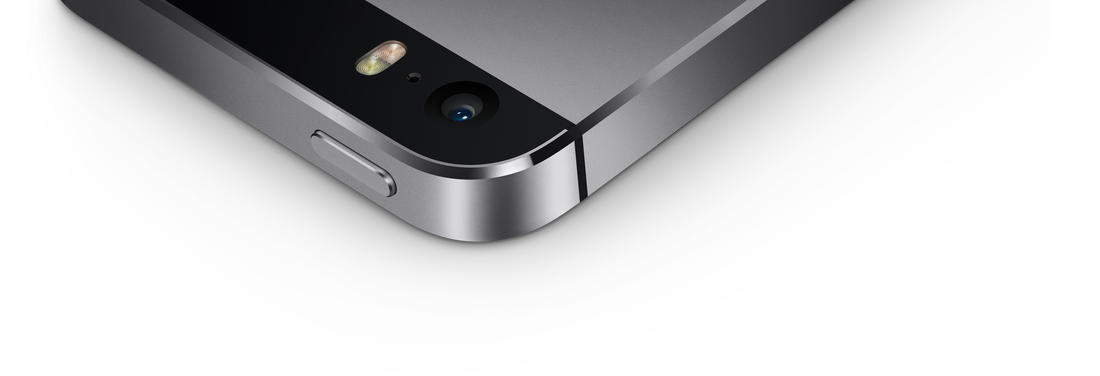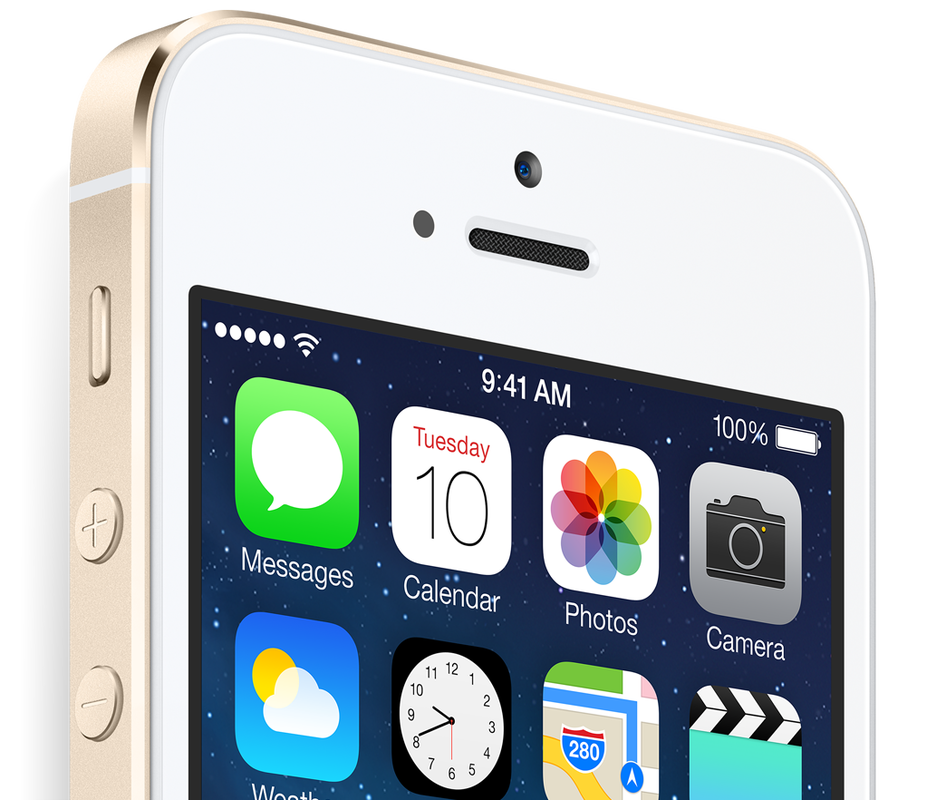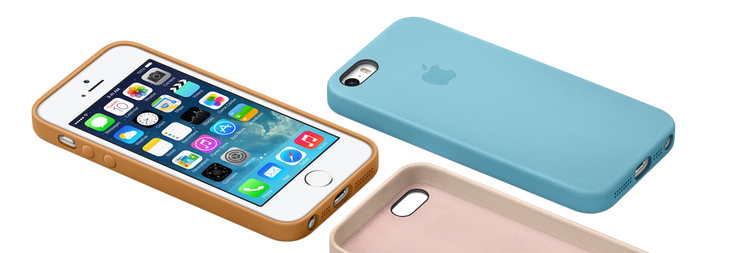Before you build to higher standard, you have to set a few iPhone 5 set a precedent. Apple engineers and designers managed to compress first-of-their-kind technologies inside a space that’s a mere 7.6 millimeters thin and 112 grams light. A feat like that required designing or redesigning multiple components. And it resulted in an incredibly thin, impressively light, extraordinarily powerful smartphone. After coming so far with iPhone 5, it was a perfect place to start with iPhone 5s. And while the engineering challenge was significant, we succeeded in adding more to it without making iPhone 5s bigger or heavier. |
| The very first iPhone introduced the world to the idea of touch as the most natural way to interact with a smartphone. Touch to hear a song. Touch to browse the web. Touch to take a picture. All of it began with something perfectly simple: your finger. And now we’ve taken touch to the next logical place with Touch ID, the fingerprint identity sensor. Your fingerprint is the perfect password. You always have it with you. And no one can ever guess what it is. But beyond that, it just made sense to us that your phone should recognize you. It should learn you. Not require you to memorize and enter passwords in order to use it. We also knew the right place to locate the sensor was where you naturally touch your iPhone — on the Home button. But how could we fit all the technology that sensors require in such a small space? | That required a team of biometric experts and hardware engineers to rethink how sensor technology works and redesign the iconic Home button. Made from laser-cut sapphire crystal, the surface of the button directs the image of your finger to a capacitive touch sensor, which reads beneath the outer layers of your skin to get a detailed print. Surrounding the button is a stainless steel ring that detects your finger, wakes the sensor, and improves the signal-to-noise ratio. Software then reads the ridges of your print and finds the match to unlock your phone. It’s all highly advanced technology that simply disappears as you use it. So you don’t notice anything. Except how unlocking your iPhone is suddenly so effortless. |
| Noticeably faster performance and graphics that feel more true to life. That’s the perennial goal when creating a new mobile chip. But performance shouldn’t come at the expense of efficiency. Poor battery life for the sake of speed is never an option with iPhone. Which is why we engineered an all-new chip and an all-new coprocessor for iPhone 5s: A7 and M7. The A7 chip is designed around 64-bit architecture — a first for any smartphone. The move to 64-bit has been years in the making. But we did it because we wanted to put desktop-class processing power in the palm of people’s hands. Just imagining what people will do with that made the decision to invest in it an easy one. The A7 chip gives iPhone 5s the power it needs for all the capabilities it now possesses. It’s up to 2x faster than the previous generation in both CPU and graphics performance. It has an all-new image signal processor. And it supports OpenGL ES 3.0, enabling visual effects previously possible only on computers and gaming consoles. Yet with all these performance enhancements, A7 is still energy efficient. The new M7 coprocessor is designed to make iPhone 5s even more efficient. It offloads work from the A7 chip by collecting motion data from the accelerometer, gyroscope, and compass. Apps can then use this data without constantly engaging the A7 chip. Because M7 is engineered for this specific task, it uses significantly less power than A7 would require. So again, battery life is spared. |
the world's favorite camera was a great starting point
| You recognize just how indispensable a smartphone camera is when it achieves certain things. It shoots consistently great photos all the time, anytime. It’s full featured without being complicated. And it’s packaged in a device that’s slim and light enough to always be with you. The iSight camera does all those things remarkably well. So well, in fact, it’s become the world’s most popular camera. But while people love using it, we weren’t satisfied. And as we considered enhancing it, we knew we could go one of two ways: Simply add more megapixels for the sake of marketing a bigger number. Or keep the megapixel count at 8 but add a larger, state-of-the-art sensor. | A larger sensor allows the individual pixels to get larger. And larger pixels, not more pixels, mean a better picture. So iPhone 5s has an all-new 8MP sensor. One that’s 15 percent larger than before, with pixels measuring 1.5 microns. We also increased the aperture to ƒ/2.2. All that adds up to 33 percent greater light sensitivity. That’s significant, because more light gives you better, brighter images with even more accurate colors. And the new True Tone flash intelligently figures out exactly how much light your shot needs. Why did we add all these features to an already amazing camera? Because it’s much more efficient to teach iPhone to take great photos than it is to teach millions of people to be expert photographers. |
| Among the many things that went into the design of iOS 7, one was a consideration of the devices on which it would run. We knew iPhone 5s would be powered by the A7 chip and 64-bit architecture. And we designed iOS 7 to take advantage of it. Beyond that, however, the design goal of iOS 7 was to take a familiar and loved operating system and make the experience of using it even simpler, more useful, and more enjoyable. | iOS 7 is the manifestation of simplicity. The interface is purposely unobtrusive. Anything that doesn’t add value has been stripped away. So the focus is on what matters most: your content. Layers and translucency create depth and provide a sense of context and place. Animation and motion make everything more engaging. And the result is a better, smarter, more delightful experience overall. iOS 7 is just another way iPhone 5s is the culmination of forward thinking. |
| We didn’t approach the iPhone 5s Case as a mere accessory. We saw it as the perfect companion for the iPhone 5s and its iconic design. Which is why we crafted it as passionately as we did. The case is made from premium, hand-selected leather that feels luxurious. The leather precisely envelops the volume buttons, the on/off switch, and the chamfered edge in a way no other iPhone case does. As a result, even with the case on, iPhone 5s still feels incredibly slim and elegant in your hand. | A single piece of leather is wrapped around a sturdy frame using a process that combines hand craftsmanship and precision machining. The result is a truly seamless design in which every detail has been carefully considered. Inside, a soft microfiber lining helps protect the finish of your iPhone. Outside it’s just as noteworthy. A pigment-rich dye is infused deep into the leather, ensuring that each of the six colors looks remarkable at first glance and still does over time. |



